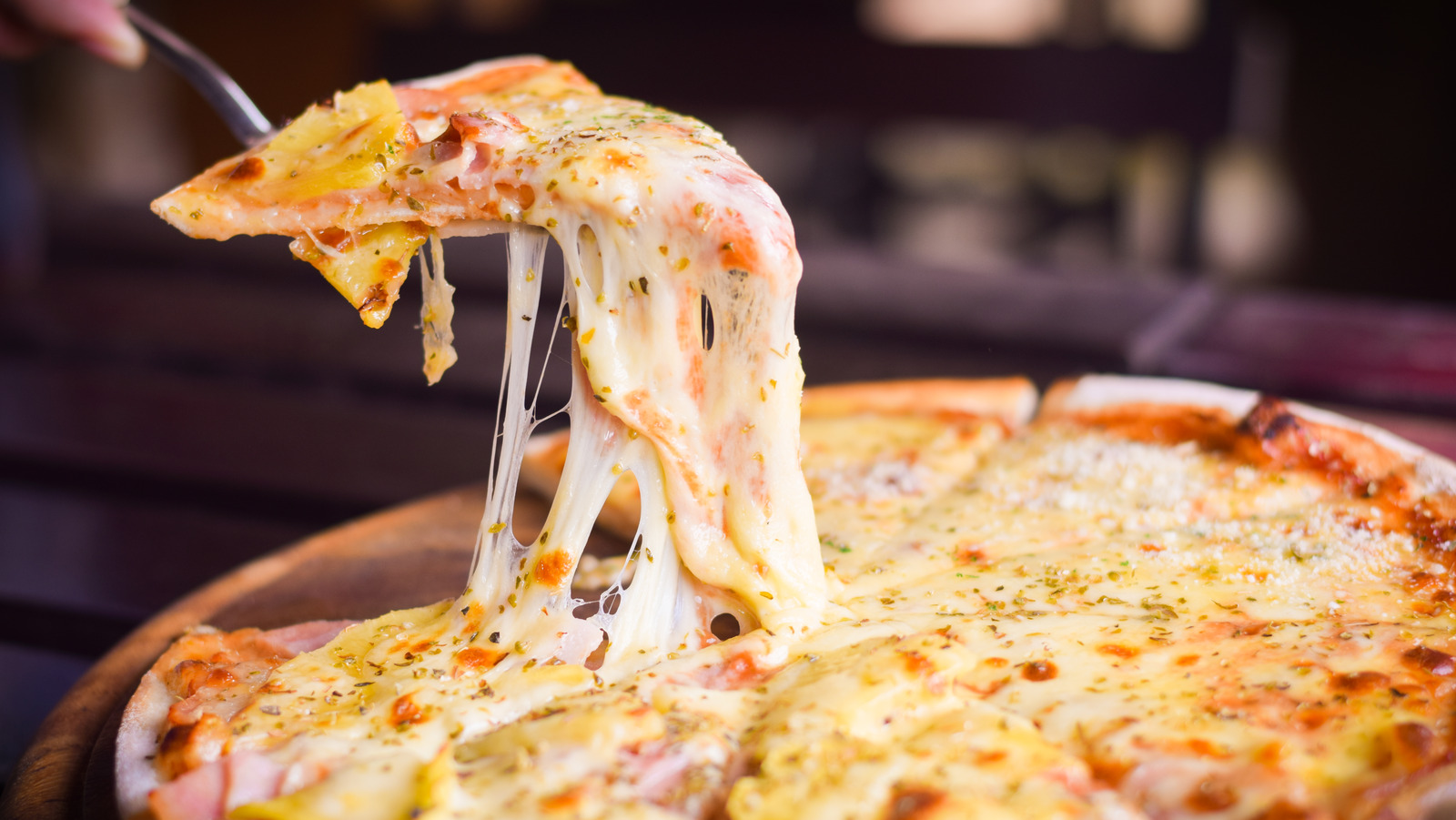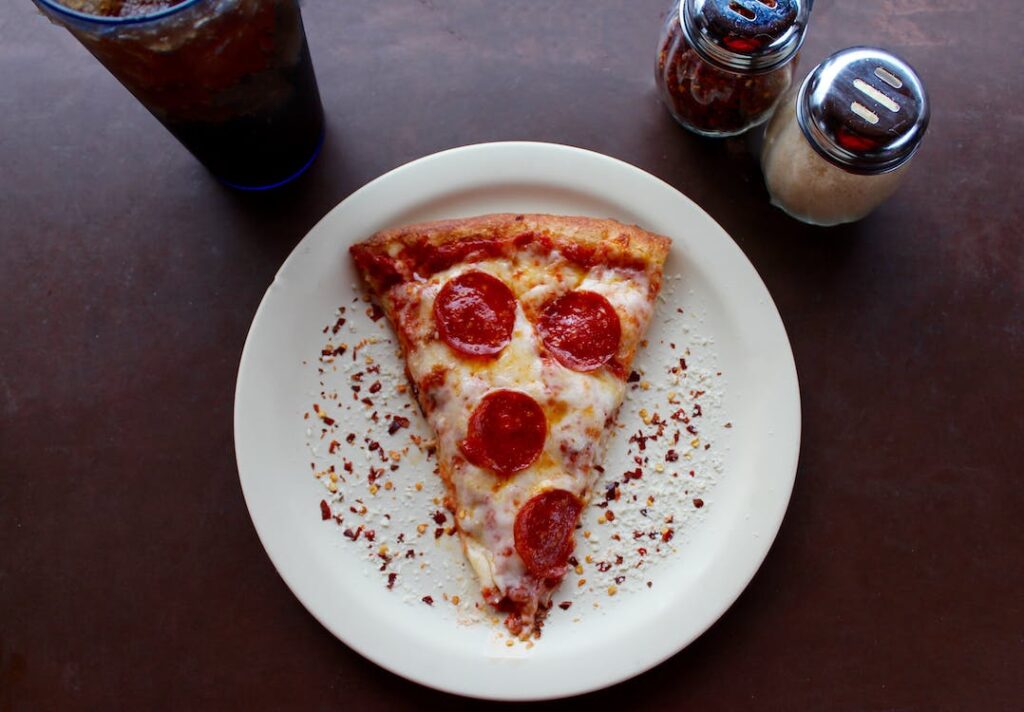Embarking on the seemingly simple quest to discover the caloric content of a slice of pizza unravels a world of complexity and variation, underpinned by the rich tapestry of ingredients, cooking methods, and pizza styles that exist across the globe. This article, titled “How Many Calories Are In A Slice Of Pizza,” is your comprehensive guide through the calorific landscape of one of the world’s most beloved foods. Crafted by culinary experts and nutritionists, this piece not only demystifies the calorie count of different pizza slices—from the thin crusts of New York to the deep dishes of Chicago—but also explores how toppings, cheese types, and even cooking methods can sway the nutritional scale.
Understanding the caloric intake of your pizza slice is more than a mere numerical endeavor; it’s a step towards mindful eating and appreciating the art of pizza making. Whether you’re a fitness enthusiast tracking your calorie intake, a food lover curious about the nutritional aspects of your favorite dish, or simply seeking to make healthier food choices, this article promises to deliver valuable insights. By offering a detailed breakdown of calories, juxtaposed with tips on how to enjoy pizza in a balanced way, we aim to enrich your culinary knowledge and perhaps, even alter your pizza preferences.
Join us as we slice through the myths, uncover the facts, and provide you with the tools you need to navigate the delicious, yet often perplexing, world of pizza. Let your curiosity lead the way as we embark on this flavorful journey that promises to enlighten, educate, and entertain. Whether you’re about to order a pizza or are contemplating making one from scratch, understanding the caloric content is crucial in making informed decisions that align with your health and dietary goals. Welcome to “How Many Calories Are In A Slice Of Pizza”—where every slice counts, and every reader leaves a little more informed.
Understanding Pizza’s Nutritional Content
Pizza contains a blend of carbohydrates, proteins, fats, and various micronutrients. The interplay between the crust, cheese, sauce, and toppings impacts its nutritional profile. Making informed choices about portion size and ingredients is key to enjoying pizza responsibly.
On average, a slice of 14” cheese pizza contains around 285 calories. Comparatively, a slice of pepperoni pizza has approximately 330 calories. These counts can shift upwards or downwards based on factors like crust thickness, cheese type, portion size, and cooking methods.
Calorie Counts of Specific Pizza Types
- Margherita Pizza: 170-280 calories
- Cheese Pizza: 180-290 calories
- Pepperoni Pizza: 210-320 calories
- Veggie Pizza: 160-270 calories
- Meat Lovers Pizza: 220-330 calories
Toppings and Their Nutritional Impact
Toppings provide an opportunity to add nutrition but also extra calories:
- Vegetables like mushrooms, onions, peppers, and olives add fiber, vitamins, and minerals for around 15-20 calories per serving.
- Meats like pepperoni, sausage, bacon, and ham add protein and iron but tack on anywhere from 20-50 calories per slice depending on type and quantity.
- Go easy on high-fat toppings like extra cheese, which can add over 100 calories per slice.
When piling on toppings, balance them out by removing cheeses or meats to avoid exponential calorie increases.
Crust Varieties and Their Effects on Calories
The three main pizza crust types are:
- Thin crust uses less dough for a lighter, crispier texture and fewer calories at around 150 per slice.
- Regular crust is moderate in thickness and calories at 200-250 per slice. This allows for more crispness than thick but less than thin.
- Thick crust has a bready, doughy texture with around 250-300 calories. Though more filling, it packs in extra carbs and less nutrient density than thinner crusts.
Whole wheat or multigrain crusts add fiber and protein. Cauliflower or broccoli crusts are lower carb options but verify nutrition info, as processing can diminish benefits.
Pizza Sauce: Beyond Tomatoes
Basic pizza sauce contains tomatoes, olive oil, garlic, spices, and herbs. Tomatoes provide lycopene, potassium, vitamin C and vitamin A. Garlic contains the antioxidant allicin. Spices like oregano add protective compounds.
Some sauces include sugar, boosting calories slightly. Opt for low-sodium versions to limit excess salt intake. Adding vegetables like onions, mushrooms, or peppers amps up nutrition without costing you many calories.
Comprehensive Nutritional Analysis
As a complete meal, pizza delivers carbs, protein, and a spectrum of micronutrients.
- The dough provides carbohydrates, B vitamins, and minerals like iron and calcium. Hand tossed whole wheat crusts in particular pack fiber and protein.
- Cheese supplies protein, calcium, vitamin A, and vitamin B12. Part-skim mozzarella offers less fat than whole milk varieties.
- Tomato sauce contains lycopene and vitamin C while meats on pizza offer iron and B vitamins.
- Sodium content comes mostly from cheese, cured meats, and crust, so moderating these can reduce salt intake.
With the right balance of crust, cheese, sauce, and toppings, pizza can deliver a nutritious meal.
Pizza Compared to Other Fast Foods
Pizza is often singled out for criticism regarding fat and calorie content. But it compares well to many other fast food options:
- A slice of cheese or pepperoni pizza generally has fewer calories than a burger, fried chicken, or taco meal from a fast food joint.
- Pizza protein content is on par with or higher than burritos, burgers, or sandwiches when factoring in both crust and cheese.
- Veggie pizzas can provide more fiber and vitamins than many fast food choices.
When eating a reasonable portion, pizza holds up well in the fast food realm. But consumers get into trouble when consuming excess quantities.
Adapting Pizza for Dietary Restrictions
With its blend of grains, dairy, proteins, veggies, and more, pizza is a customizable canvas. There are options for restrictive diets:
- Gluten-free crusts are widely available, replacing wheat flour with cauliflower, rice, or almond flour. Verify nutrition info, as processed options may be higher in calories or carbs than wheat dough.
- Dairy-free cheese like mozarella made from almond or coconut milk offers an alternative source of protein and calcium for the lactose intolerant.
- Meatless pizza caters to vegetarians and vegans. Load up on veggie toppings and choose plant-based cheese options.
Portion Control and Its Importance
Pizza is often shared family-style rather than served as individual portions. This can lead to overconsumption of slices. A few tactics can curb excess calories:
- Stick to a 2-3 slice maximum per person as a sensible portion for a meal.
- Select individual size pizzas or pizzettas when possible to control servings.
- Split pizza as an appetizer or light meal with salads rather than as a full entree.
- Box up leftovers immediately rather than leaving the full pizza out.
Psychological and Cultural Aspects of Eating Pizza

Beyond strictly nutritional concerns, what makes pizza so irresistible? Some contributing factors include:
- Pizza is a comfort food for many, conjuring fond memories and associating it with celebration and leisure. The satisfaction of hot, salty, fatty flavors lights up the brain’s reward system.
- As a shareable food, pizza facilitates group bonding and a sense of community. The round pie shape subconsciously brings people together.
- Pizza has mass appeal as an affordable, convenient option with endless customizations to suit most tastes. Its versatility and adaptability contribute to its enduring popularity across cultures.
- Originating in Italy, pizza has taken on an iconic status globally through chains like Dominos and Pizza Hut. Its reputation expands beyond food to touch on lifestyle and identity.
Environmental Considerations
From an environmental lens, some impacts stem from pizza ingredients:
- Beef and pork toppings have large carbon footprints. Opt for local, organic, or plant-based alternatives.
- Palm oil in some dough recipes contributes to deforestation. Seek pizzerias using sustainable oils.
- Locally sourced, seasonal produce provides fresher, eco-friendly toppings.
Making Pizza Healthier
With mindful decisions, pizza can be a wholesome, balanced choice:
- Select thin or medium crusts over thick, deep dish varieties to moderate carbs and calories.
- Load up the veggies like spinach, peppers, onions, mushrooms, and tomatoes to add nutrients without excess calories.
- Use part-skim mozzarella and limit extra cheese. Sprinkle on fresh herbs and spices instead of salt.
- Choose healthy proteins like beans, grilled chicken, or seafood over fatty meats like bacon or sausage.
- Hand toss and wood fire traditional Neapolitan pies rather than deep fry for a lighter calorie profile.
Practical Tools and Apps
- Nutrition calculators like CalorieKing allow users to input crust, sauce, cheese, and toppings to determine overall calories and macros in customized pizzas for informed decisions.
- Apps like MyFitness Pal breakdown nutrition for pizzas from major chains to approximate values when dining out.
- Many pizza restaurants now provide online nutrition data for menu items to aid in selections.
Conclusion
Far from just empty calories, pizza delivers protein, carbs, vitamins, and minerals in one convenient package. Attention to portions and ingredients allows for healthy, balanced enjoyment rather than overindulgence. Pizza in moderation can be savored guilt-free as part of a well-rounded diet. With some mindful adaptations and choices, pizza retains its place as a cherished food tradition for generations to come.

